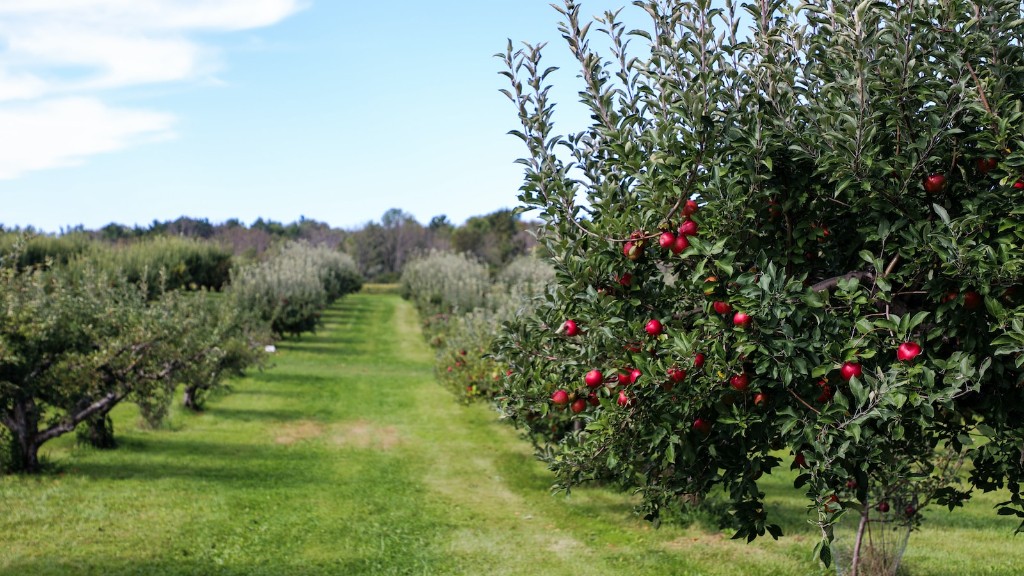The topic of whether or not to remove lemons from a young tree is a difficult one. It’s a tricky decision that requires careful consideration of the tree’s health and longevity. On the one hand, it’s a great idea to remove lemons from a young tree, as it helps the tree to gather strength and reach its maximum potential in a reasonable time frame. On the other hand, removing lemons too early may cause damage to the young tree. So, what should you do when considering removing lemons from a young tree?
First, it’s important to consider the stage of development your tree is in. If your tree is still in its early growth stages, then removing lemons is a good idea, as it will help the tree to concentrate its energy on growing taller, and stronger. However, if the tree is in its later stages of development, then it might be best to wait until the tree is fully grown before you start removing lemons. This will ensure that your tree is strong enough to withstand occasional losses of lemons and still maintain a healthy climate.
Another key factor to keep in mind is the size of the lemons. If the lemons are quite large, then it’s best to wait until they are ripe before removing them. This will ensure that the tree has enough time to store essential nutrients, which will help the long-term health of the plant. On the other hand, if the lemons are small and the tree still looks healthy, then it’s okay to start removing them.
It’s also crucial to assess the health of your tree before removing the lemons. If your tree’s leaves are wilting, or the trunk is weak, then removing the lemons will only exacerbate the situation. The best thing to do in this case is to wait until the issue has been properly addressed before harvesting any lemons.
Finally, the climate also has an essential role to play in determining whether removing lemons from a young tree is a good idea. If your climate is conducive for harvesting lemons, then it’s safe to proceed. However, if your climate is too hot or too wet, it will be wise to abstain from harvesting until the weather is more ideal.
Young Trees In Warm Climates
When it comes to removing lemons from a young tree in a warm climate, it’s essential to take extra caution. The reason for this is that if the climate is severely hot, lemons will ripen too quickly and can rot before they can be harvested. As such, it’s usually better to wait until the end of the season, when the weather is not so harsh, before harvesting lemons from a young tree.
It’s also advisable to limit the amount of lemons you harvest in one season. This is because harvesting too many lemons at once can cause energetic stress to the young plant. Furthermore, this will reduce the amount of nutrients the tree can accumulate, which can lead to a decrease in its growth rate. As such, it is best to harvest a small number of lemons at a time so that the tree can remain in equilibrium and reach its maximum growth potential.
As a final point, it’s essential to keep in mind that removing lemons from a young tree takes time and effort. As such, it is best to plan ahead and allow for a few days of extra time for harvesting and culling the lemons. This will ensure that you don’t miss any lemons and make sure that the tree stays healthy.
Young Trees In Cold Climates
The process of removing lemons from a young tree in a cold climate is slightly different than in a warm climate. Generally, it’s safe to start harvesting lemons at the start of the season, as long as the weather is favorable. That said, it’s still important to assess the health of your tree before harvesting, as cold climates can sometimes unexpectedly bring heavy rain or other unfavorable conditions.
It’s also vital to keep track of the progress of the lemons, even during the cold months. Since cold climates can cause the lemons to become ripe quickly, slow down the process by keeping the trees in a cool and wet environment. This will enable the lemons to ripen slowly, so that they can be harvested properly and with care.
Additionally, it’s important to bear in mind that cold climates can cause certain diseases to attack your tree. As such, it’s essential to treat the tree with an appropriate fertilizer or plant food to ensure that it remains healthy throughout the season. This will also help to prevent the tree from experiencing any abrupt losses of lemons.
Finally, it’s essential to keep an eye on the size of the lemons. If the lemons are too small at the start of the season, it might be best to delay harvesting them until they reach their full size. This will ensure that the tree gets enough time to store the essential nutrients before harvesting begins.
Young Trees In Dry Climates
When it comes to removing lemons from a young tree in a dry climate, there are a few additional considerations. For one, the size of the lemons must be taken into account, as lemons in dry climates tend to ripen very quickly. As such, it might be best to wait until the lemons are slightly larger before harvesting them. This will ensure that the tree has enough time to accumulate essential nutrients for future growth.
Moreover, it’s also important to be mindful of the amount of sunlight the tree receives each day. If the tree is placed in an area too exposed to direct sunlight, it might be best to relocate it to a spot that has more shade. This will help to protect the young tree from experiencing drought-related illnesses.
In addition, it’s important to keep the soil of the tree moist at all times. This is because dry climates can cause the soil to dry out quickly and prevent lemons from growing. As such, it’s best to keep the soil moist by regularly watering it and applying a suitable fertilizer. This will ensure that the tree remains healthy and will help to encourage the growth of lemons.
Finally, it’s essential to monitor the tree closely to make sure that it is healthy. If any sign of a disease or illness appears, be sure to treat it quickly and efficiently. This will help to prevent the tree from experiencing any drastic losses of lemons, and ultimately guarantee its longevity.
Young Trees In Rainy Climates
When it comes to removing lemons from a young tree in a rainy climate, the main challenge is to avoid overwatering. Since rainy climates tend to receive more rainfall than other climates, it’s essential to adjust your watering habits accordingly. Too much watering can cause lemons to rot before they can be harvested, while also encouraging the growth of parasites.
In order to avoid overwatering, it’s best to water the tree in the morning, and make sure that the soil is allowed to dry out, to a certain extent, before the next watering. Additionally, it’s essential to check the soil for any pests before any watering takes place. This will help to keep pests away from the tree and ultimately, allow it to remain healthy throughout the season.
Furthermore, it’s also important to keep in mind that rainy climates can sometimes bring floods. If this occurs, it’s essential to take immediate action and move the tree to an area above the floodplain. This will help to protect your tree from any water-related damages and diseases.
In addition, it’s essential to monitor the size of the lemons closely. Since rainy climates can cause lemons to ripen quickly, it’s best to make sure that they are large enough before harvesting them. Doing so will ensure that the tree has enough time to store essential nutrients and stay healthy.
Finally, it’s also important to apply a suitable fertilizer at least once a month. This will help to keep the soil in optimal condition and allow the tree to harvest lemons without any issues. It’s also a good idea to trim away any dead branches or leaves during this process, as this will improve the overall health of the tree.



